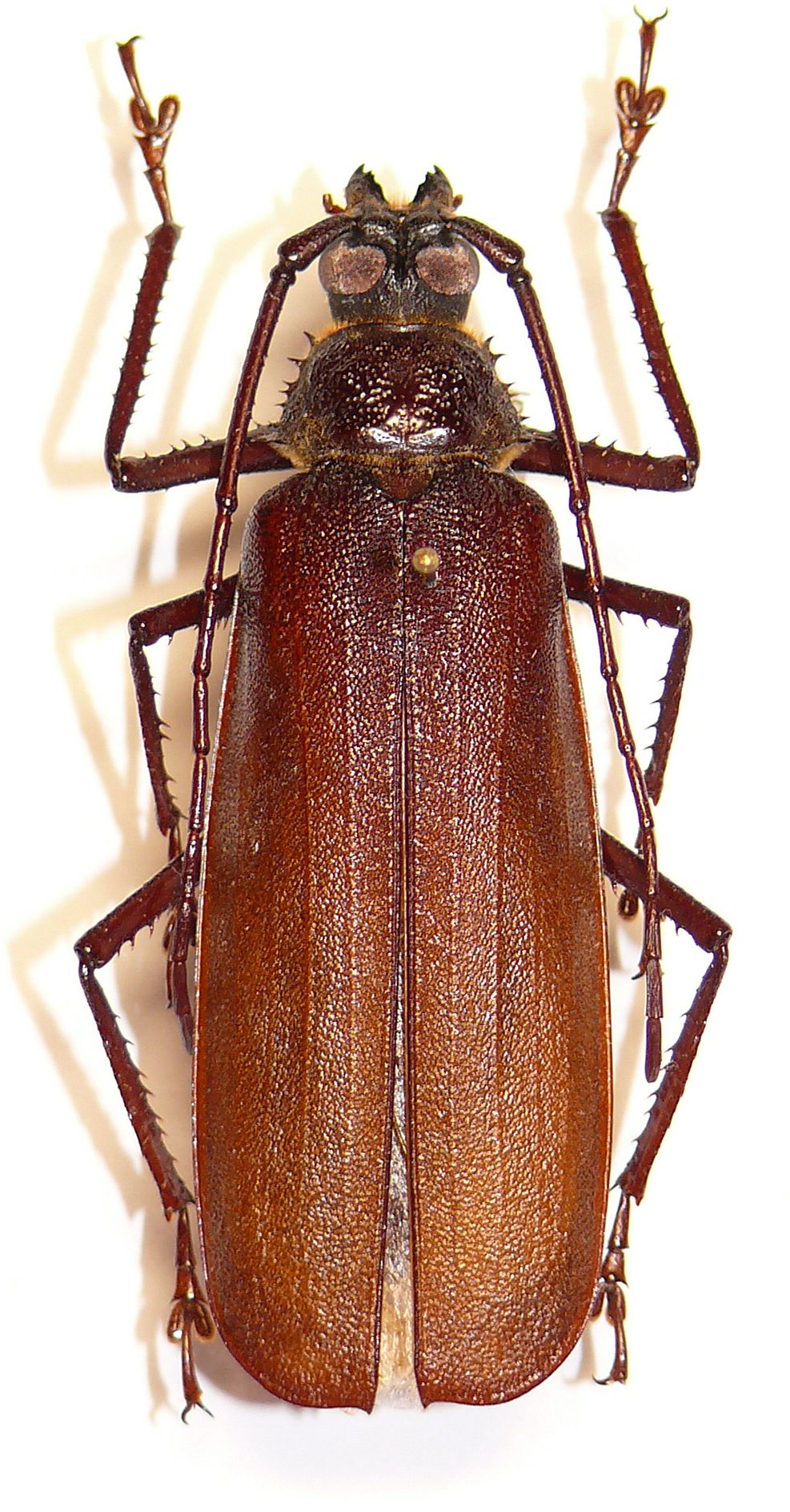| Author |
 Topic Topic  |
|
|
Jiri
Member Nathrius
Czech Republic
38 Posts |
 Posted - 05/11/2011 : 18:37:25 Posted - 05/11/2011 : 18:37:25



|

Hello,
this specimen is from Tanimbar Isl. and I am not able to determinate it..
thank you very much! |
Edited by - Xavier on 26/05/2016 08:27:05 |
|
|
Francesco
Forum Admin
    
Luxembourg
9612 Posts |
 Posted - 05/11/2011 : 20:23:26 Posted - 05/11/2011 : 20:23:26




|
It is a female of Anomophysis, but among the species present in this area (ceramensis, alfura, serricollis) none has been recorded from Tanimbar.
According to the key proposed by Quentin & Villiers (1981), you can separate the females in this way:
1 Elytra with short dense pubescence.......serricollis
- Elytra wit sparse pubescence.......................2
2 Antennomore III as long as pronotum.......ceramensis
- Antennomere III 1.4-1.6 as long as pronotum...alfura
I am unable to detect the pubescence... however, there also is the possibility that it belong to a new (sub)species. |
 |
|
|
Capitaine
Scientific Collaborator
   
France
1850 Posts |
 Posted - 25/05/2016 : 17:45:06 Posted - 25/05/2016 : 17:45:06



|
Back to this old topic:
This is a specimen female of Rugosophysis fratter (Komiya & Drumont,2008) |
Claude |
 |
|
|
africaone
Member Purpuricenus
 
Belgium
486 Posts |
 Posted - 26/05/2016 : 07:52:24 Posted - 26/05/2016 : 07:52:24



|
isn't is frater (brother in latin) in place of fratter ?
|
s'il n'y pas de solution c'est qu'il n'y a pas de problème ! akuna matata .... |
 |
|
|
Xavier
Scientific Collaborator
    
France
12516 Posts |
 Posted - 26/05/2016 : 08:26:36 Posted - 26/05/2016 : 08:26:36



|
Yes, the correct name is Rugosophysis frater Komiya & Drumont, 2008.
... and without ( ), only used for species describe in another genus. |
Edited by - Xavier on 26/05/2016 08:49:26 |
 |
|
|
Capitaine
Scientific Collaborator
   
France
1850 Posts |
 Posted - 26/05/2016 : 11:11:28 Posted - 26/05/2016 : 11:11:28



|
Thanks for correction  |
Claude |
 |
|
| |
 Topic Topic  |
|


